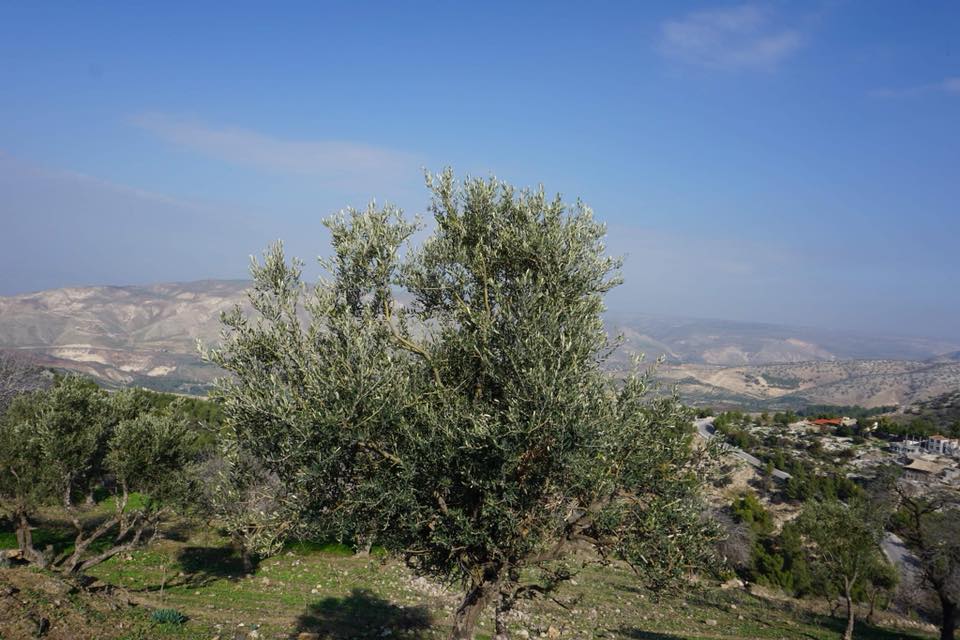
This is a dangerous beauty.
Bigger is a more dangerous beauty. Israel descends to the west from the slopes of the mountains, and just a hundred meters to the north of the world’s most conflicting terrain, the Golan Heights, the Golan Heights in Bengal. A little further back is the territory of Palestine, the Israeli-occupied West Bank. Umm Qais. The last border in the northwest of Jordan. Gadara, an abandoned city built by the Greeks, now called Um Kais.
Falling afternoons, twilight, distant valleys, low peaks, gray-green swamps on the vast Golan Heights, the sinking of darkness behind the mountains, and the faintly visible Lake Tiberias. Just come here to see this afternoon. About three hundred years before the birth of Christ, the Greeks chose such a safe place to build a city. Steep hillside on three sides. You have to come here just by crossing the narrow mountain path from the east with deep grooves on both sides. Not to mention the ruins of Greek temples or the later Roman ruins. Come to enjoy the beauty of this afternoon.
Golan Heights is Israeli-occupied Syrian territory. Israel occupied it in the 1967 Six-Day War. It is not a very large plateau, about the same size as the Gazipur district of Bangladesh, an area of eighteen hundred square kilometers, very wide where there are 43 kilometers, and the longest maximum is 71 kilometers. However, its economic and political importance is immense. At the northern end is Mount Hermon, one of the main water sources in Syria, Israel, Lebanon, and Jordan. The Jordan River carries water from here and pours some of it into Lake Tiberias, carrying the rest as far as the Dead Sea. From the highest peaks, one can easily see Damascus in Syria and Haifa in Israel. The fertile soil here produces a lot of grapes, apples, and vegetables, and there is a lot of gas and oil stored under the soil. And there are twenty thousand brave Druze Syrians.
This sunny afternoon, the sunny sun, the Golan Heights mountains, the blue sky in the background, the silent silence, the fear of sniper attacks by Israeli soldiers, the unbridled Danamela kite, and the curiosity to see everything, are all sitting there. Whatever is behind it, whatever the sacrifice, is behind that mountain, beyond the scope of my vision, the beauty of nature and the vastness of the mountains, all the cruelty, and brutality covered in the vastness.
Back to the left, a little to the west, close to the foothills, is the lake Blue Tiberius, known as C and Galilee. I think I look up a little, or lean on the wings of that eagle, on the shores of the lake, where the Golan Heights begin, the steep peaks, the shallow forests, the fleet of fishermen’s boats onshore, the call for unveiled beauty. This is a different feeling, an eager desire to see everything, an aspiration, it seems like all the beauty unseen for a thousand years, a hidden civilization.
There are many stories about Lake Tiberius. It is probably the lowest lake above sea level, a small freshwater sea, about 21 km long and 13 km wide. Jesus Christ accepted the first four fishermen as disciples from the shores of this lake, whether the Antichrist would come from here or not. It is from this lake that Israel meets most of its freshwater needs.
The day before I went to Aqaba, south of Amman, at the far southwest end. On the shores of the rugged Aqaba Gulf, the port of Aqaba is surrounded by treeless gray rocky hills. On one side is Saudi Arabia, in front is the Sinai Peninsula in Egypt, and on its right is Israel. Peace beaches in the disputed desert, state-of-the-art residential resort complexes, leisure centers, gatherings of thousands of tourists.
The decision to visit the Blessing Tree in English was a somewhat bold move. The vast scattered black stone desert. Dubai did not feel like a dune-like Saudi Arabia. Very rough, hilly. There seems to be no settlement, no vegetation within hundreds of miles. At the northeastern end of Jordan, Syria on one side, Iraq on the other, and Saudi Arabia on the back. Was a little scared. However, the Egyptian mad driver was more afraid of getting into Hassan’s car, driving at a speed of 160 kmph, when he asked to reduce the speed to 160 kmph. There is no smile on his face, he speaks, of course, he can’t speak English, he just looks at the street.
At least 180 kilometers from Amman. Tuku Bhai’s Jordanian driver Amjad was ill and had to go with driver Hasan. He knows the path well, I think he has come many times. I found out that there is not a single tourist here. Absolutely desolate desert. It is true that there are no big trees around the Sahabi tree, but the place did not seem so dry, I saw a lot of small weed forests.
Damascus was a very developed city in the pre-Islamic era. At that time, from the various deserts of Arabia, with camel caravans, everyone went to Damascus in need of trade. The caravan of camels from Saudi Arabia used to go to Damascus, which is a path near this Sahabi tree, where travelers used to rest. It is said that when the Prophet was nine years old, he went to Damascus with his uncle Abu Talib and rested under a tree.